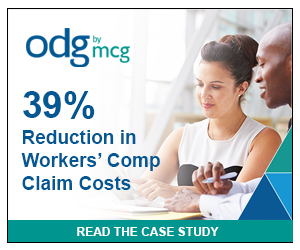Paduda: The Future of the Workplace Post-COVID
Wednesday, March 23, 2022 | 0
The following is a paraphrased summary of a panel discussion on the future of the post-COVID workplace, held at the Workers Compensation Research Institute's annual conference in Boston last week. Let’s hope we are “post” COVID.

Joe Paduda
Denise Algire, director of risk initiatives and national medical director for Albertsons Cos. (and a good friend); Dr. Craig Ross, regional medical director for Liberty Mutual; and Dan Allen, executive director for the Construction Industry Service Corp., a non-profit labor management association, were the panelists.
Allen: The vaccine requirements have been very well received by workers in construction. Strong educational outreach, not a “hammer,” rather focused on getting the word out — safety is the imperative — health care demands all workers are vaccinated, so workforce depends on being safe and being vaccinated to work in healthcare and many academic projects.
Construction workers are essential workers and are often right next to each other, so separating by 6 feet is tough. Collaboration is the key.
Algire: Albertsons relied on education and empowerment. It did not have a vaccine mandate unless required by the state.
Long COVID
Ross: Post-acute symptom COVID is considered a disability, so think carefully about how you approach this. There are 200 different symptoms in 20 different body systems, and no consensus regarding diagnostic criteria or treatment for post-COVID conditions (PCC). A recent study published in Nature compared post-COVID patients to a control group. One key finding was an increased risk for CV (cardiac) complications; most significant was myocarditis at five times greater incidence in COVID patients.
Allen: Be ready to work with employees struggling with long COVID; there’s a very long list of potential symptoms/conditions. The key question is: How do you address those? Employers must work with occ medicine specialists to better understand these symptoms and potential impact thereof. Mental health resources: Take frequent breaks, listen to understand where the patients are coming from. Not as straightforward as our typical WC claim.
There’s no WFH (work from home) in construction, which leads to more risk of getting exposed on the job. To address this, construction sites have implemented scattered job site times; come early, come late, hand-washing stations and mask regulations increased that safety.
Algire: Grocery workers were essential workers as well. Albertsons put together a clinical team, realized no one size fits all. Key is listening to employees and balancing that with collaboration, looking at teaming and ensuring folks working on stuff together are at the office at the same time. Going forward, work will be a hybrid approach.
Also, we need to keep re-assessing as COVID persists and the situation changes, and may likely continue to change.
Ross: Business needs to continue to invest in safety and safe workers.
Allen: Safety and health care are critical. Union training on these issues is paid for out of each worker’s hourly pay. “Right to work” states kill apprentice and other training programs that strongly advocate for safety. Construction results in more than 20% of workplace deaths in the U.S. in an industry with less than 6% of the workers.
The construction workforce is aging and unless you train them well, you’ll get more injuries. The great resignation started before the pandemic. Don’t overwork and overexert the workers you do have.
Ross: Going forward, we will likely see increased repetitive trauma due to WFH and calls for increased employee assistance.
Claims composition didn’t change except more severe injuries, more severe multiple body part claims. There wasn’t a delay in care. Telemedicine ramped up early and seems to be used in specific situations, especially mental health. There have been very few vaccination claims to date, and multiple studies suggest it reduces the risk of long COVID.
Allen: Suicide rates in construction are highest of any other industry — 53 for every 100,000 workers. Why: Big macho thing. Injured workers don’t report injuries. Work on mental health days, collaborate with businesses, have a foreman who talks to workers, let them know you care about them, talk to the workers so they can share issues.
Addressing the use of opiates and finding alternatives has been a big help: Sometimes there’s a little bridge from using opiates as treatment to patients using them to address stress. Hope we’ve learned from COVID and you’ll see safer workers and safer work sites, suicide prevention, calisthenics before work. There are dollars for training in the infrastructure bill for minorities to help them get introduced to careers in construction.
Misclassification is a huge issue for insurers, workers and builders; “cheat to compete.” They take advantage of immigrants, put them into jobs — unskilled, untrained misclassified workers. Cheap, untrained, unsafe labor means legitimate contractor loses that job. Construction is substandard and project has problems.
What does this mean for you?
Behavioral health was my big takeaway. Be open, let workers know they are not alone and you’re open to listening, that there is no stigma.
As one who’s dealt with panic attacks for 25 years, I completely agree. Yeah, I get them, yeah they suck, and yeah, you’ll get through this and we are here for you.
Joseph Paduda is co-owner of CompPharma, a consulting firm focused on improving pharmacy programs in workers’ compensation. This column is republished with his permission from his Managed Care Matters blog.



Comments